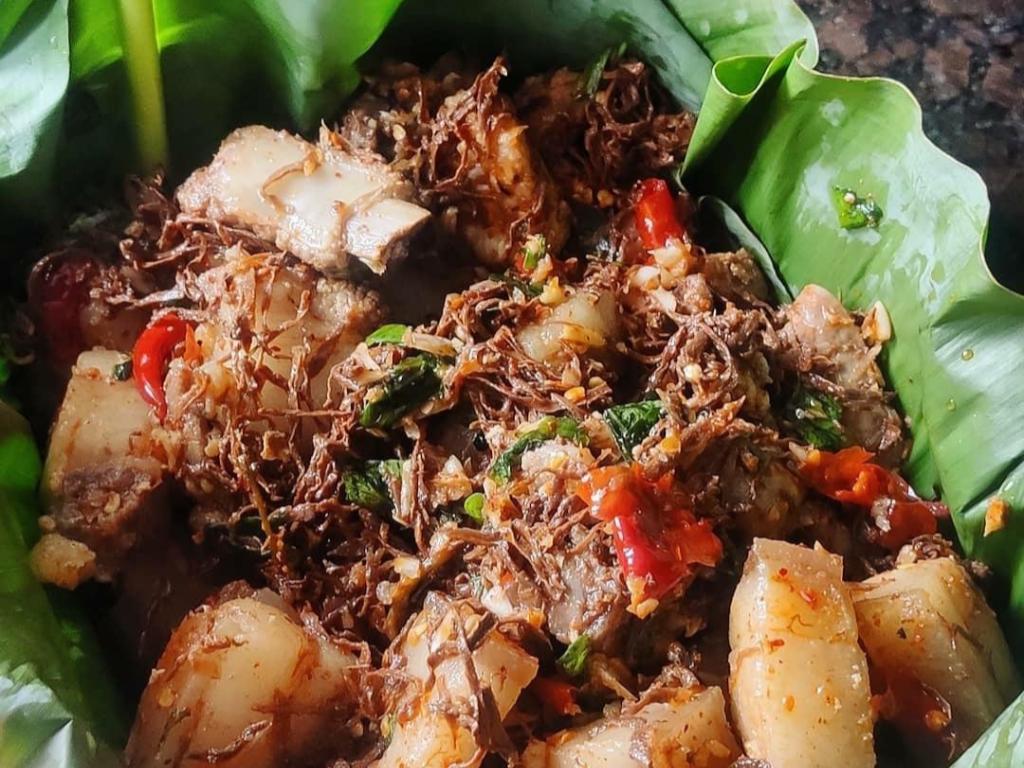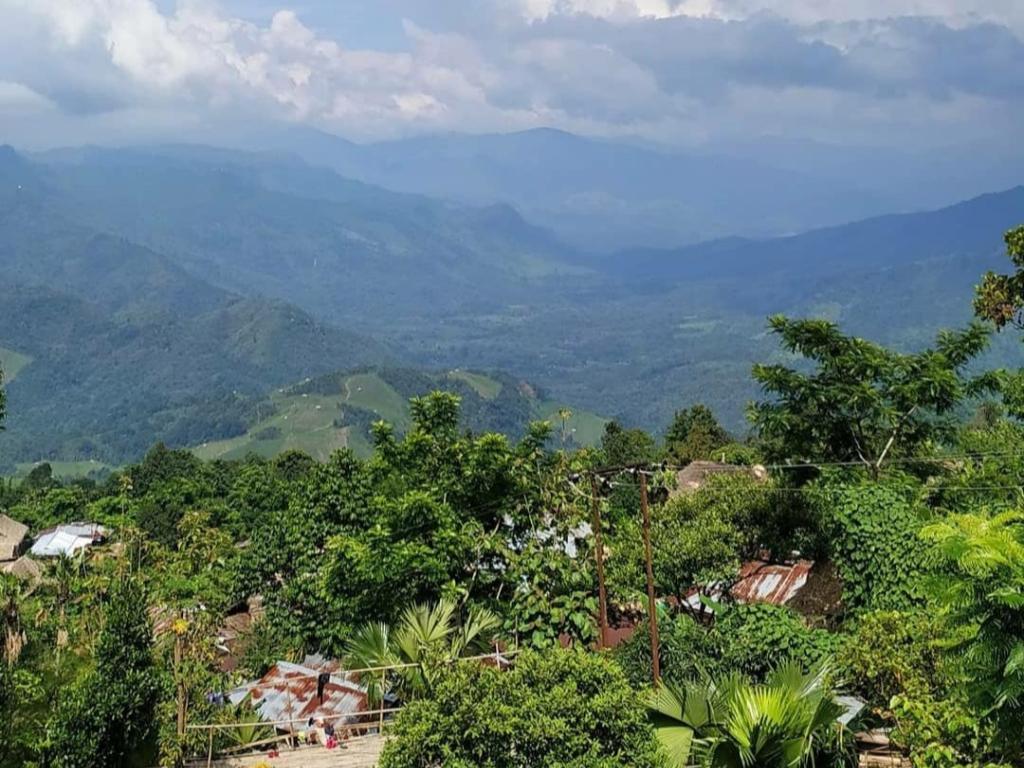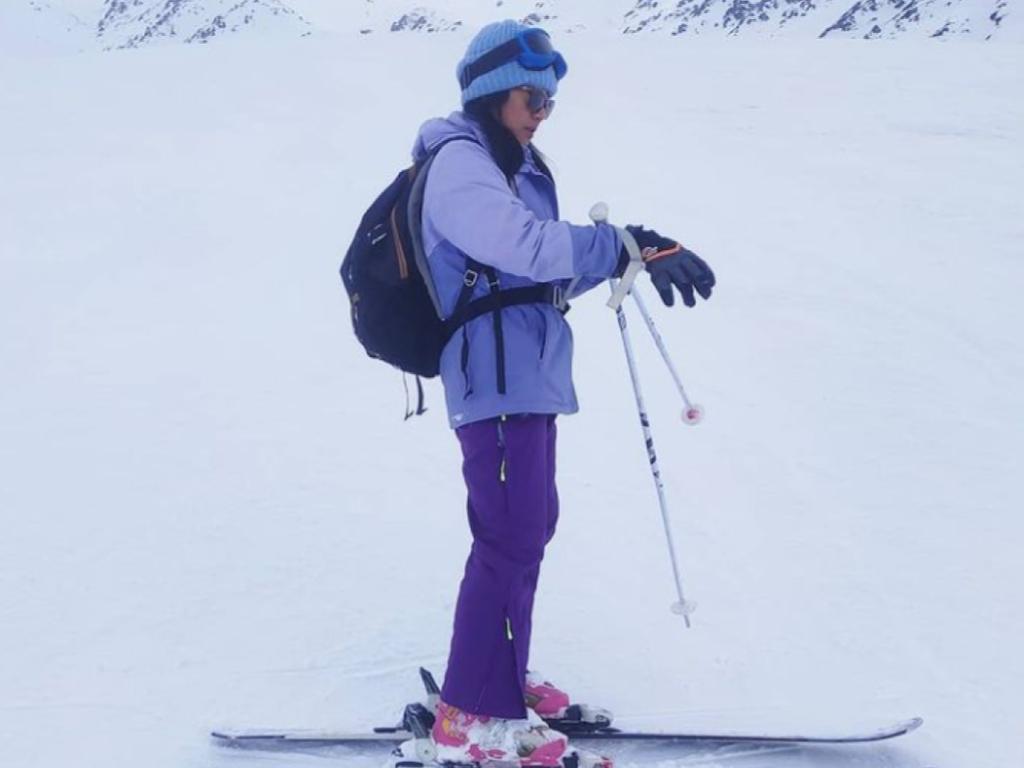
While there are many reasons why people go on to the mountains, be it for a much needed vacation or be it living life to the fullest, you won’t find many people like Sangke who walks miles and miles on the mountains interacting with people, hearing their stories and helping them with their mental health issues. When Sangke does however talk about mental health, the interaction of body and the mind and about what makes us happy in life, you’ll hardly imagine that this is the same Naga woman who climbed a 20,187 feet mountain in 24 hours, becoming the first woman to do so in the process. But when you do reflect on the magnitude of the achievement considering she never underwent any formal training, you realize why she talks so much about the human body and mind, why she believes that the human body is capable of great things if the mind and heart are in the right place.
We had the chance to interview Sangke Konyak about her journey to the mountains, her life as a mental health expert and about the rich culture of Nagaland and North East India where she grew up.
Q1) I read from your timeline that you were sitting under an apple tree and mentioned that if you write a book, it would be called “A Naga girl and her book under the Apple Tree”. So, I wanted to know about what you wanted to write about in your book?
I find sitting under a tree very peaceful and I would write a book in a place on the mountain with a lot of trees. I believe people have incredible journeys and I would want to share mine. But more than my journey, I would love to write about someone else’s journey. I meet so many people on my trips that I wish I could write a book upon, people who have gone through so much in life and are still happy.
There are people who survive the extreme weather conditions, then there are people who survive natural calamities like the Flood in Uttarakhand a few years back, I’ll want to write about their stories of survival, their stories of love and sacrifice, what life and death had taught these people. This is what I roughly want to pen down in my book, the stories of survival of different people.
Q2) You also said that a good naga joke on a hike is a must. Can you start by sharing a naga joke with us?
In Nagaland, people have an amazing sense of humour. One of the jokes I remember is about a woman carrying an alcohol under her shawl(till a few years back, women weren’t allowed to buy alcohol in Nagaland) and she meets a man, and while talking the bottle falls and she is like, “where did the bottle come from?”
Another joke I remember is a child asking money for college from his dad who had no formal education and he was like, “why don’t you do IAS instead of going to college? “
She mentions how Naga people like to keep the mood light and pass time on hikes by staying jovial and cracking jokes, all of which forms an integral part of their culture.
Q3) You are a climber, skier, runner, you do yoga and you are a practitioner in mental health. You also work to keep the Naga heritage alive. So what or who introduced you to mental health?
I believe my upbringing has played a major role in developing my interest in mental health. I grew up in an environment where we were helpful to people, I used to help people a lot in school but it was not until college that I figured out that I wanted to study psychology and understand more about the human mind. I believe that my interest in the human mind and it’s behavior came from a book given by my father in class 8, “The power of positive thinking”.
The book got me curious to study the human mind and human brain and when I studied psychology, I wanted to study mental health because I saw there was a lot of need and also my interest about the correlation between body and mind. I also wanted to study about the mental illnesses because in Nagaland, mental illnesses like schizophrenia were often associated with religious beliefs like being possessed by demons. I wanted to understand the science behind this blanket of religious beliefs regarding mental illness in India and also wanted to help those people, hence choose to study mental health.
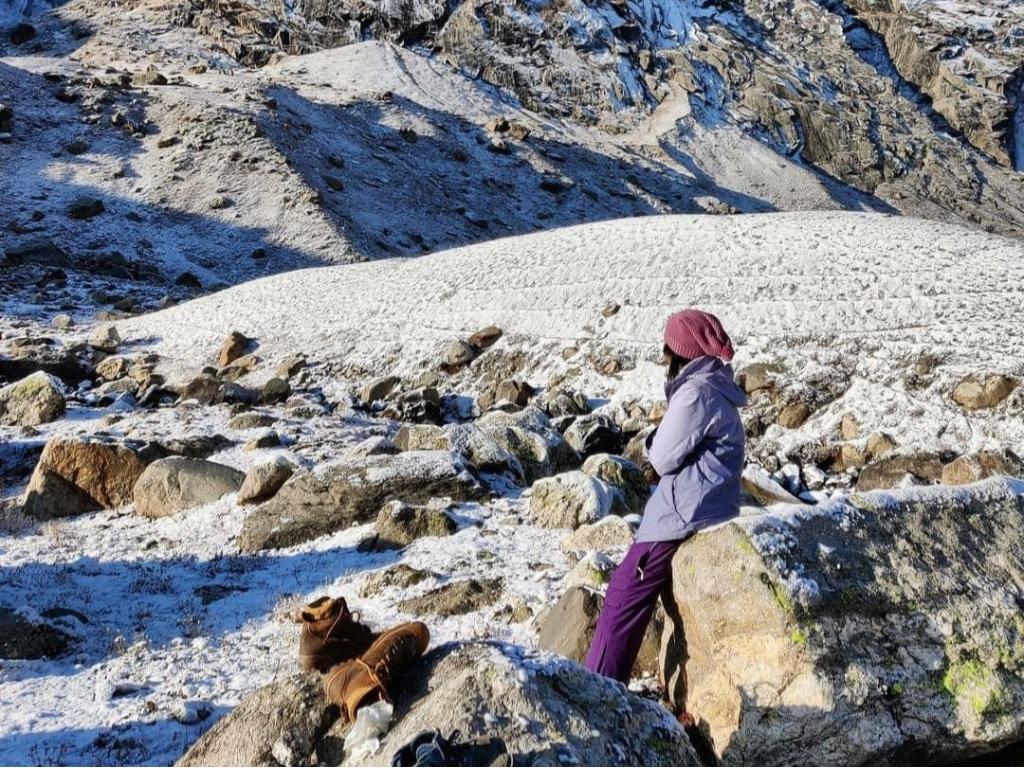
Sangke loves walking to the summits while wearing our stylish winter caps for ladies
Throughout her childhood, Sangke has seen people with mental illness around her and in her early years, she did not even understand what they were going through. It is to understand their health issues more and to break the stigma that she decided to walk down this particular yet unconventional career path. She believes it’s working because people in her community have started to understand more about the scientific aspects of mental illness.
Q4) A lot of your climbs have been done in record breaking time. You recently crossed the Usfda pass in 2 days and you usually climb peaks which take 5-7 days to trek. You were also the first Indian woman to climb the Stok Kangri in 24 hours and you mention how difficult survival is in these places. With COVID, survival has become difficult for people all around the world. So you can talk to us about survival.
In my experience, when we are talking about survival, it’s very important to have faith and hope as an individual. It’s also about believing that you will be able to do something and listening to your mind and body. Survival is not much about the destination as it’s about knowing when to turn back, when to look for support from people who we believe would be there for us.
So in a word, pushing aside pride and ego, faith and hope are what helps us to survive, even during COVID. Even when climbing, it’s about believing in the mind and body, and if they are not up to the task, it’s important to turn back and train ourselves for the task. In extreme weather conditions like in Hamda pass, we need to believe that we can get through the ordeal, that someone would guide us through the difficulties. We all are believers of different religions but I personally believe in the power of the universe, that it would never abandon us and guide us to our destination.
Such kinds of beliefs, she says are necessary to survive in those conditions.
We ran out of food during our trek, lost our trail and had to eat raw maggi and nuts, even going to Chatru was not part of the plan, so the food stock was limited.
But it is in situations like these that you learn to survive on the bare minimums and not be fussy about the small things. These are some of the different tools I have used that have worked for me. I am sure people have different experiences regarding these things.
Q5) You are from the North East which is very much unexplored and a mystical place to live in. So, being from Nagaland, tell us something about this place and the people.
I believe that apart from the mountains and the greenery of Nagaland, it’s the culture of this place I am so intrigued by. The people are loving, caring and helpful, and they also are very hospitable and friendly hosts.
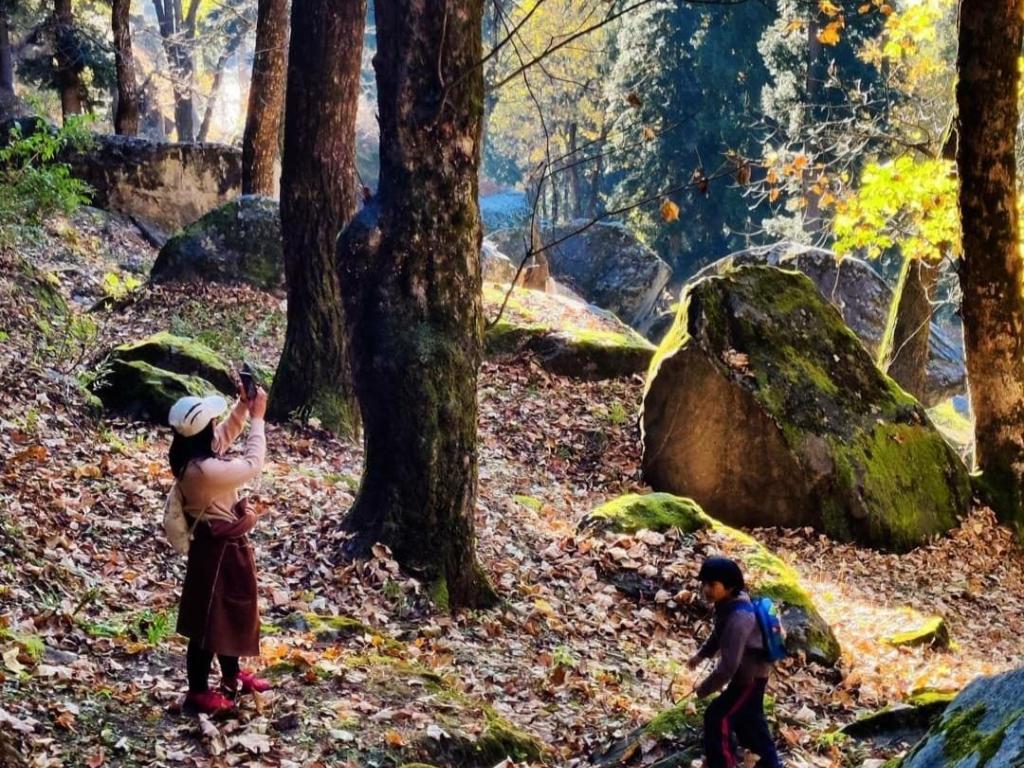
Sangke says that one should visit Nagaland not only for the greenery and the mountains, but also to explore the rich Naga culture.
Sangke says that a Naga family might meet someone and in 2 hours, invite them for dinner at their place, thus proving how friendly and helpful these people are.
I also remember how my mother used to grow vegetables and distribute them to neighbors and they in turn, would return the favour by gifting some vegetables to my mom as well. During Christmas, children used to run around the houses distributing meat and I feel that we are blessed to grow up in a culture this rich.
She believes that the Naga culture revolves strongly around humanity and has taught her to be empathetic towards people in her life. The sense of community is also very strong in the Naga culture, so if there is any single person who has a problem, the entire tribe would rush to help. She however fears that in this modern society, this culture is getting diminished but she believes that it would not be eliminated completely as these human values are deeply imbibed in the system of every Naga child.
So, my advice to people going to Nagaland is to explore the depth and uniqueness of our Naga culture along with the mountains and the greenery, and see how people of North East actually live and enjoy life.
Q6) Talking about the self-sustainable lifestyle of the people of Nagaland, you shared an instance with me of having a picnic by the river. Can you talk about that?
Picnic in the rivers is a common and fun activity in Nagaland specially in the winter months. People would go and catch fish, and eat them there itself. The thing about Naga people is that they do everything wholeheartedly, so they would wait and wait till they catch a fish and then enjoy having it with their close friends, families or relatives they would go to picnics with. I remember hiking a long way to reach river banks to do our winter picnics and hiking back as well.
People in Nagaland do picnics to celebrate friendships, birthdays and any major occasions and it has become a way of life for us. We love to go to these places, especially in the winter as we can catch fish, cook it by the river side and in a word, escape away from the village or towns to these places with no networks and enjoy the human interactions.
In Nagaland, we consider guests a blessing and if you are going on a Saturday, the Naga people might take you to their weekend picnic trips as well! Hence picnics form a very important part of the Naga culture.
Q7) In the cities, single use plastics and disposable cutleries have become a part and parcel of life. This has gone beyond measure and affected our environment. So in Nagaland, while going on picnics, how do you all do without these plastics and waste materials that can have an adverse effect on the environment?
In Nagaland, we rely a lot on Banana leaves to serve or cover food. Nowadays, people have vehicles to go to picnic spots but earlier, people used to walk so they couldn’t carry too much load.
We also eat with our hands so we don’t need any spoons or forks, however people do use the bamboo and tree branches to make spoons to serve food and bamboo is cut to make glasses for tea or drinks. We also use the dry wood by the river to cook our food and use leaves of nearby trees to cover or wrap food items.
So people here simply rely on nature for most of their needs and are self sustainable and environment friendly.
Using wooden spoons or banana leaves to serve food has also become part of our culture and traditions. My mother always uses wooden spoons to cook food and in religious ceremonies, we serve rice and food in banana leafs to all the guests. So, being sustainable is part of the Naga heritage and culture.
It’s interesting to note that the Naga culture has a huge positive impact on the environment as almost all wastes produced are biodegradable and get mixed with the soil over the passage of time.
Next Sangke shows us the surroundings from where she is speaking and how popular trek routes to Kullu Manali start from below where she is located.
Q8) You have walked 23km to explore the mountain ranges. So, what is in your opinion, the best way to get to know the mountains better?
I believe the best way to get to the mountains is to walk. The weather is amazing in the mountains, and the sun is not really hot, so you can walk for hours, talk to people who are very friendly and might have invited you for tea in pre COVID times, and most importantly soak in the surroundings better.
I did not know that I had walked 23kms until I checked when I came back. I was going along a trail, then I followed some people with baskets going on a different lane to see where they were going. From there, I started exploring, visiting villages with small but beautiful huts, people gardening and harvesting corn in the fields and I spent some of the best times there amidst nature and the locals.
Bicycling is another way although it’s a little different because you cannot always park your cycle safely to explore.
So, I believe walking is the best way to explore the mountains as you meet new people, explore new places and most importantly, contribute to your own fitness as well.
Q9) What is the one lesson this pandemic has taught you?
I think the pandemic has taught me many lessons but one important thing I have learnt is that I can live with the very minimal.
I can survive in life with just one backpack and you actually do not require a whole lot of things in life to keep you going, your basic needs are more than enough. This pandemic has taught us this the hard way!
Pro Tip: If you are looking to visit some of the wonderful places Sangke mentions in her interview, do remember to pack merino wool thermals and right trousers for hiking.
As part of our interview series with people who inspire us to live life by the day, read about this young Engineer turned cyclist’s journey from the plains of Dehradun to representing India here[will attach link when live].
It was a live interview done by Yuktie. The live interview was transcribed by Aditya Das for Kosha Journal.
Your feedback means a lot to us. If you have tips on slow travel in India, questions, comments or you want to write for the Kosha Journal, reach out to us at konnect@kosha.co . We look forward to hearing from you. Stay tuned for more stories! Share your adventure and experience with us by tagging us @koshatravelwear on Instagram, Facebook, LinkedIn, Pinterest and use #mykoshastory !
